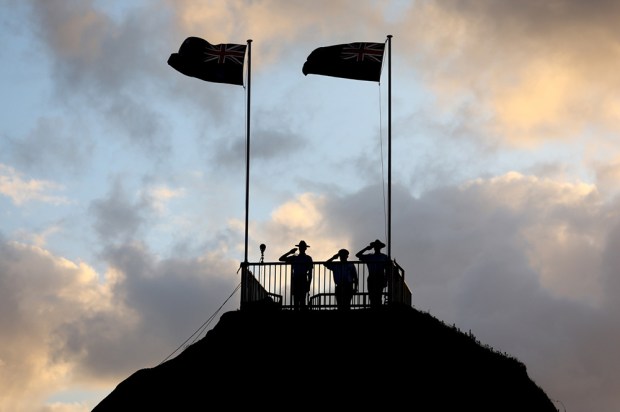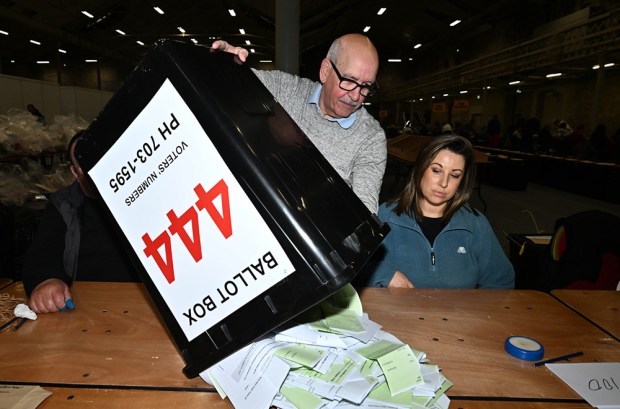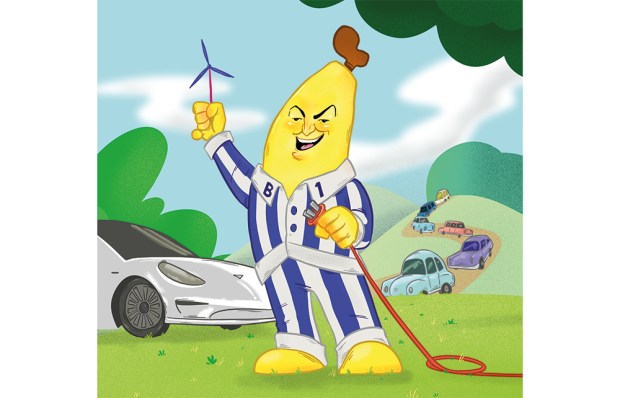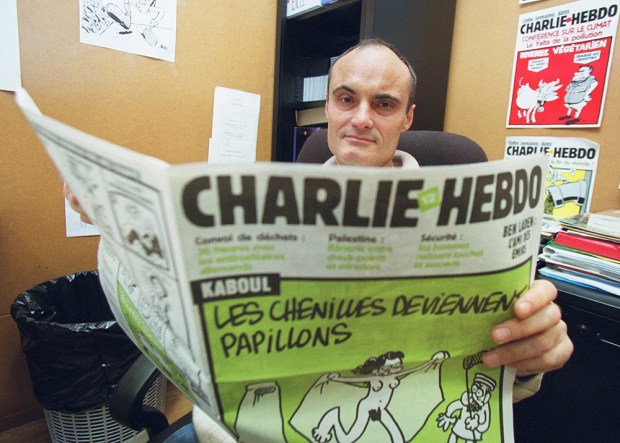In the 1966 film How to Steal a Million, Audrey Hepburn stars as Nicole, the wide-eyed daughter of unabashed crook Charles Bonnet. Bonnet occupies himself with forging famous works of art by Van Gogh and the French Impressionists, which are then sold for a considerable sum to self-professed sophisticates with more money than sense. Unswayed by Nicole’s moral misgivings, Bonnet takes great pride in his trickery. ‘Don’t you know that in his lifetime Van Gogh only sold one painting?’ he boasts, ‘While I, in loving memory of his tragic genius, have already sold two.’
The Australian art world may turn out to have a Charles Bonnet of its very own. Together with conservator Mohamed Aman Siddique, Melburnian art dealer and horseracing aficionado Peter Gant is accused of fraud in relation to two paintings that are alleged to have been falsely attributed to Brett Whiteley. The disputed works are Big Blue Lavender Bay, sold to Sydney Swans Chair Andrew Pridham in 2007 for a cool $2.5 million; and Orange Lavender Bay, sold to luxury car dealer Steven Nasteski for $1.1 million in 2009. Police allege that both works were created in 2007 or 2008 – some fifteen years after Brett Whiteley’s death – by Siddique, who was operating out of Victorian Art Conservation’s studios in Collingwood. Gant is then alleged to have orchestrated the initial sale of both works.
During a committal hearing this week in the Melbourne Magistrate’s Court, Brett Whiteley’s glamorous ex-wife, Wendy, described seeing Big Blue Lavender Bay for the first time. She said she realised almost immediately that something was amiss: ‘The line was stiff.’ In May 2008, Wendy claims she telephoned Anita Archer, a specialist at prestigious auction house Deutscher Hackett, and told her, ‘The painting just doesn’t look right.’ Pridham later took civil action against Archer in the NSW Supreme Court in 2012, claiming she had neglected to undertake ‘reasonable care, diligence and skill’ when attempting to validate the painting’s provenance. The two parties settled confidentially out of court when experts failed to agree on the authenticity of the picture.
Encountering Orange Lavender Bay some time later, Whiteley also thought she smelled a rat. ‘I can tell it’s a fake,’ she attested. ‘It’s dead. It looks to me as though it has been traced.’ She proceeded to conduct an impromptu formal analysis of the two works in court, suggesting that the heavy opaqueness and generally static nature of both compositions aroused deep suspicion. In response to dogged questioning from Robert Richter QC, she adamantly proclaimed, ‘This is a farce.’
The essence of this case lies in the paintings’ sale, as much as their creation. As Richter contended in court this week, the difference between a copy and a forgery is paramount. Gant and Siddique’s alleged crimes are those of attribution, since it is perfectly lawful to simply paint in the style of a famous artist. As this is a criminal case, the prosecution would have to prove two things beyond reasonable doubt at trial: a) that these paintings are not the work of Brett Whiteley, but Siddique; and b) that Siddique and Gant attributed known forgeries to Whiteley with the intention of profiting from their sale. Clearly one can’t have the intention to commit fraud with a painting that is genuinely attributed. The case hinges, then, on authenticity.
At this stage it would seem therefore that Siddique is more vulnerable to prosecution, especially as Big Blue Lavender Bay features what is ostensibly a Whiteley signature. Unless the prosecution can provide compelling evidence to the contrary, Gant’s lawyers could claim he was unaware of the paintings’ inauthenticity. Importantly, Gant did not directly participate in the most recent sale of either painting. Anita Archer sold Big Blue Lavender Bay to Pridham, after she purchased the work from Gant for $2.2 million. Orange Lavender Bay was sold to Nasteski by Melbourne-based art dealer John Playfoot, who bought it from Gant.
Significantly, Brett Whiteley seems to have played a part in the muddying of his own waters. Wendy Whiteley concedes that on several occasions Brett bypassed his regular art dealer to sell paintings for cash, as his dependence on heroin grew ever more severe. She also does not dispute that these works were frequently of an inferior standard. Asked whether the ‘dead’ quality of the two contested paintings could be ascribed to Brett’s addiction, Wendy Whiteley responded, ‘The use of heroin is not conducive to producing great art.’ Nonetheless, she asserted that even under extreme influence, Brett ‘could produce bad paintings but not these kind of sleek, dead things.’
But now that technological advances have made forgeries increasingly easy to detect, why bother? Invariably, the creation of a convincing fake is labour intensive and requires the kind of dexterity that many aspiring fraudsters are unlikely to possess. Any forgery worth the time is therefore incredibly high risk.
Certainly, this sort of thing may be hugely lucrative – if the ‘Whiteley’ paintings are indeed phoney, Gant and Siddique have made a multi million-dollar profit. The impetus seems a little more complex than that, however. In December 2014, the Atlantic’s Noah Charney wrote an intriguing piece in which he asserted that forgers of very famous artworks want to get caught. Yes, there’s a packet to be made from producing a plausible fake, but any street cred is retrospective. There’s fame and glory to be had in being found out. Certainly that is the case with Britain’s most notorious art fraudster, John Myatt, who was arrested in 1995 after having falsely attributed many of his own works to Monet, Renoir, Braque, Matisse and Giacometti. Myatt still paints, selling works under his own name for upwards of $40,000. He even had his own TV show, Mastering the Art, in which he shared the tricks of the forging trade. Many convicted art fraudsters also cite a kind of socio-political purpose to their crime: their forgery is an act of protest against an art world dominated by crass materialism over deeper aesthetic contemplation. It would seem there is no better justification of white-collar crime than class warfare. In an interview he gave late last year to Martin McKenzie-Murray for the Saturday Paper, Gant said, ‘I f–king despise inherited wealth. Art used to be about things […] Now it’s just a vehicle for rich people to make more f–king money.’
Got something to add? Join the discussion and comment below.
Get 10 issues for just $10
Subscribe to The Spectator Australia today for the next 10 magazine issues, plus full online access, for just $10.
You might disagree with half of it, but you’ll enjoy reading all of it. Try your first month for free, then just $2 a week for the remainder of your first year.













Comments
Don't miss out
Join the conversation with other Spectator Australia readers. Subscribe to leave a comment.
SUBSCRIBEAlready a subscriber? Log in